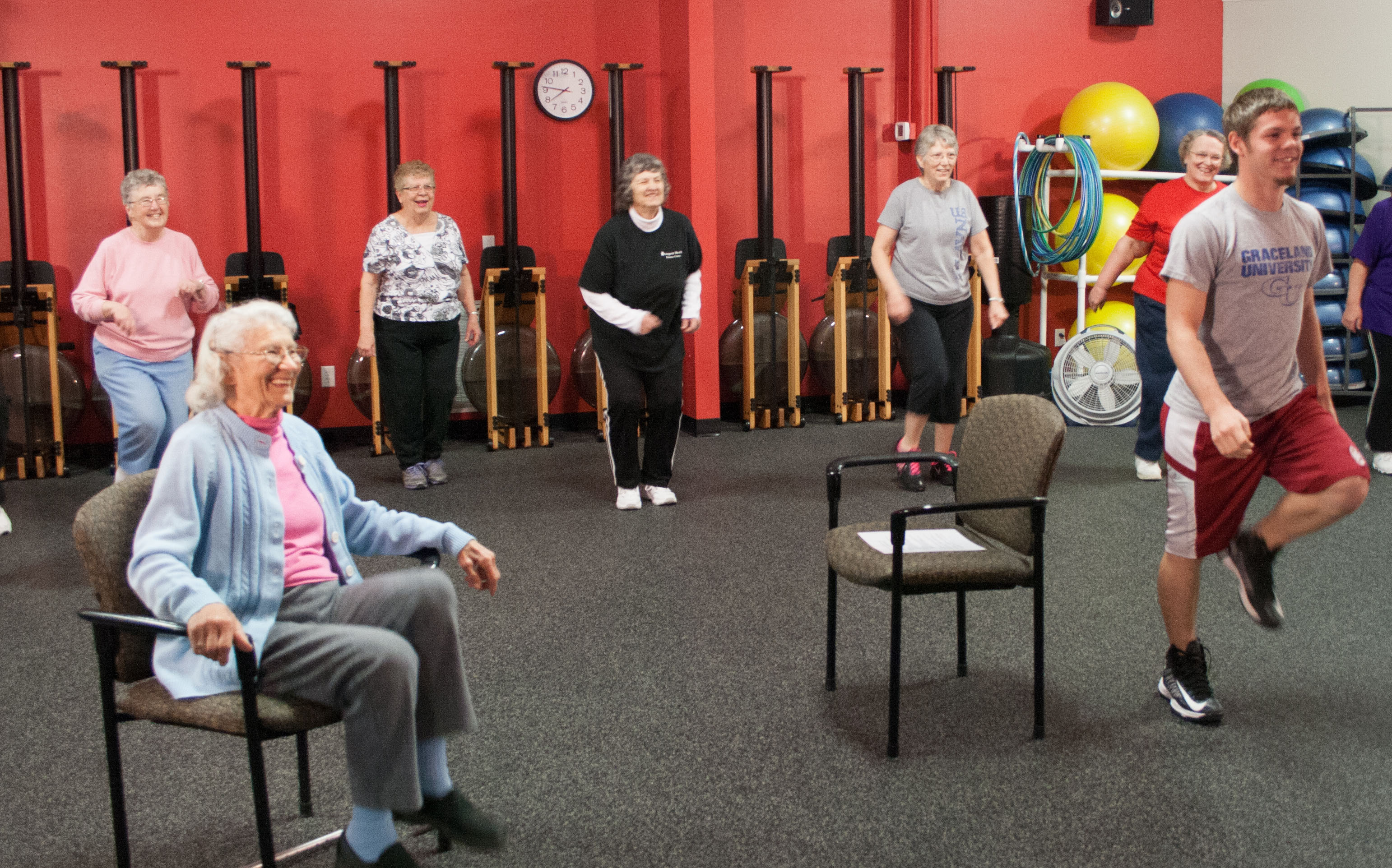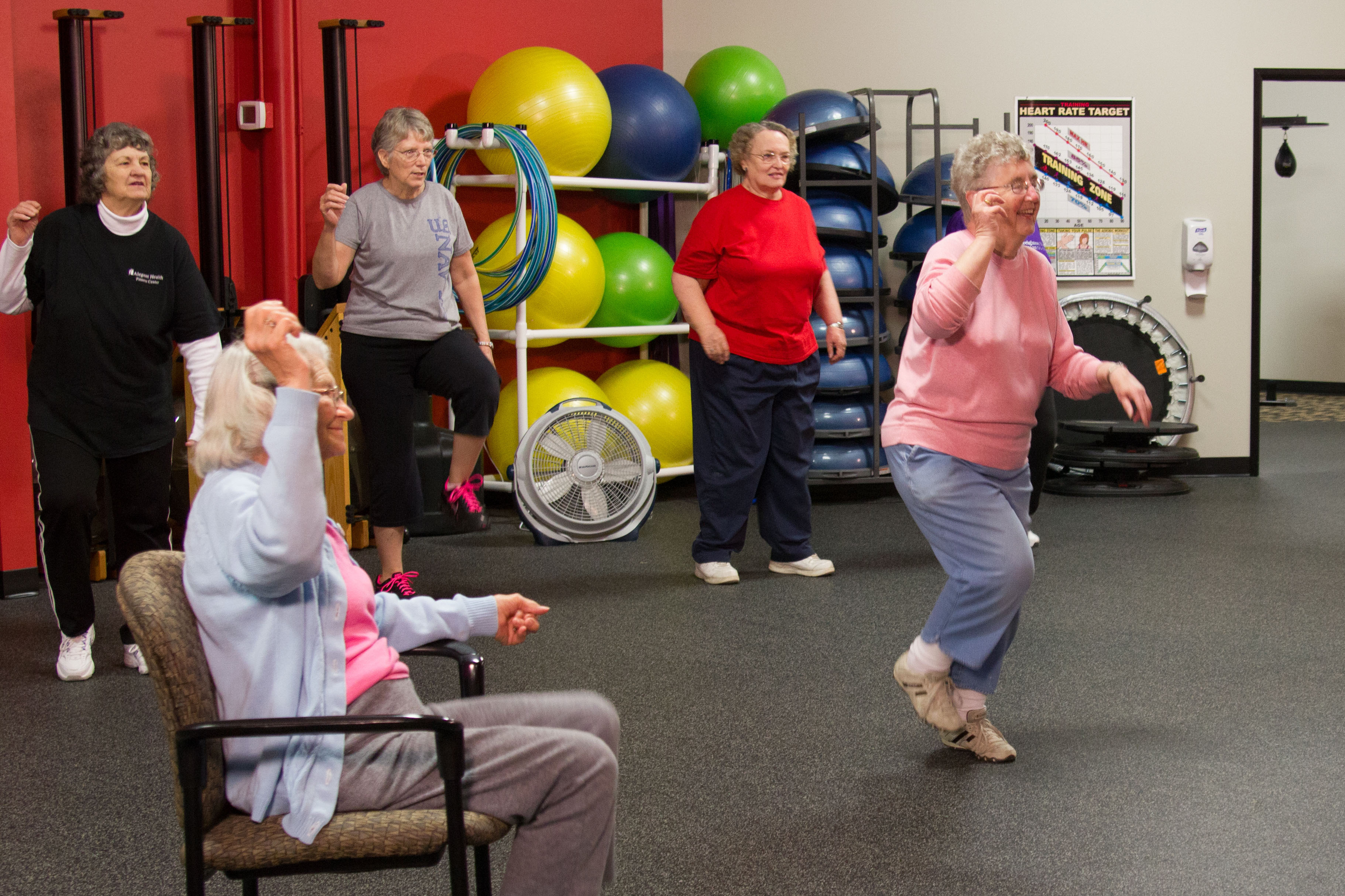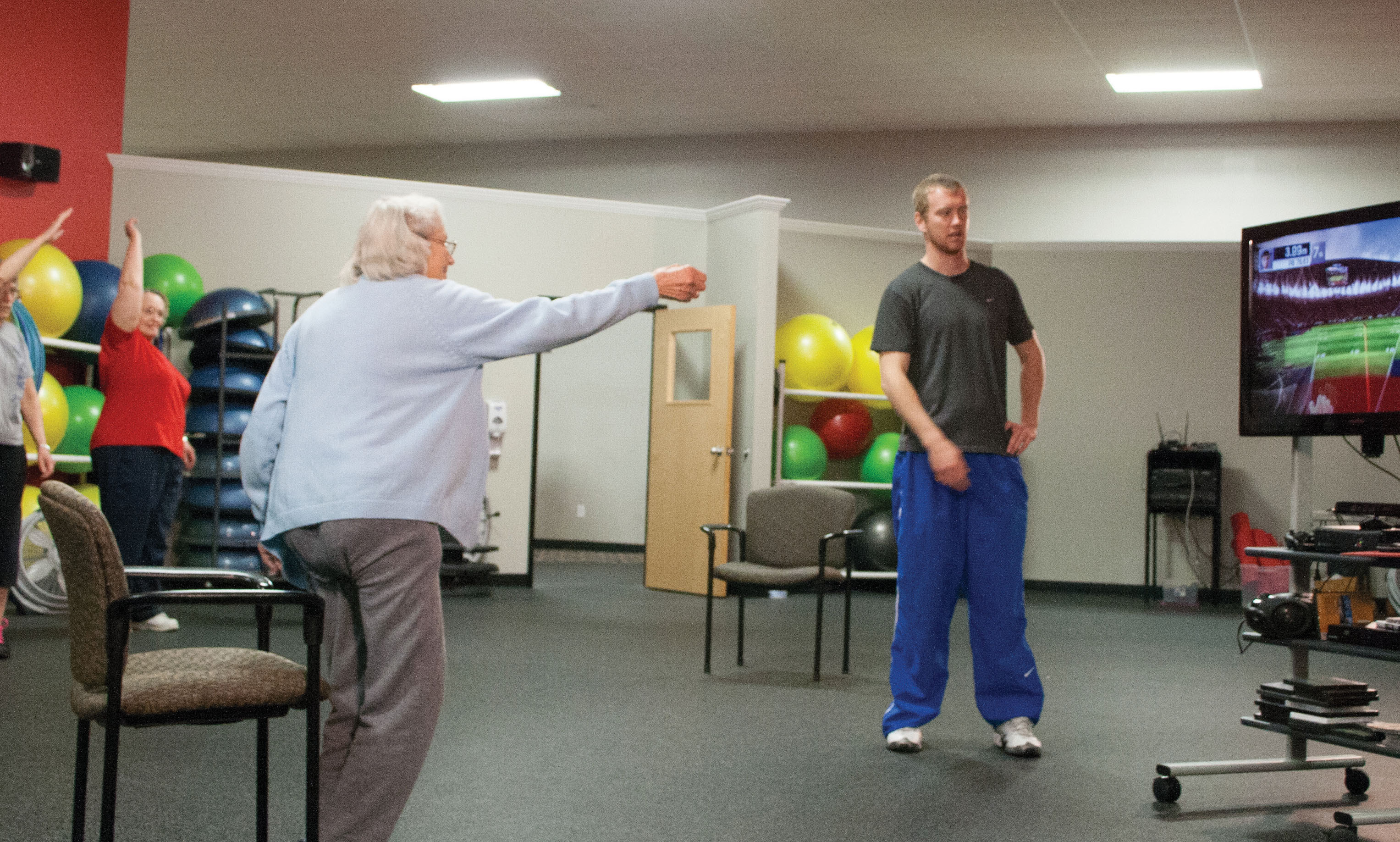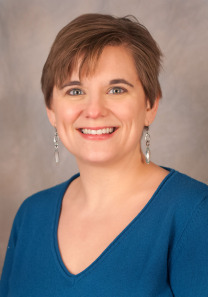
A LIFE program trainer leads the group through a series of exercises. Photo courtesy of Iowa State University Extension and Outreach (Larger photo)
AMES, Iowa – People are living longer, but not necessarily living healthier, and that is something a group of Iowa State University professors wants to change. They hope to accomplish that goal by using video games to promote fitness and encouraging older adults to get active.
With the help of ISU Extension and Outreach, the research team has piloted the “Living well through Intergenerational Fitness and Exercise” (or LIFE) program in several Iowa communities. The program is aimed at reaching older adults in rural areas who are isolated or do not have access to a gym.
“Our program is really focused on whole-person wellness. We want to include that socialization aspect with the physical activity,” said Jennifer Margrett, an associate professor of human development and family studies and director of the gerontology program. “By socializing and doing interactive games, older adults are also exercising their brains, building relationships, and so it helps in more than one way.”
High school and college-age trainers led the eight-week exergaming program that combines strength-building exercises with video games, like tennis or bowling. The trainers teach older adults, who may be intimidated by the technology, how to use the gaming systems so they can continue with the program after the initial eight weeks.
Based on success of the pilot program, researchers have launched a new website so that the program can be implemented anywhere. The most successful partnerships match student trainers at a local high school with a group of older adults, researchers said. Senior housing complexes are another option.
“It’s a relatively low-cost program that can be housed anywhere with a decent amount of space and a TV for the gaming system,” said Sarah Francis, an assistant professor of food science and human nutrition. “These small, rural towns may not have a gym, but a room in the library or a community center where they can set up is all they need.”
Paying a price for inactivity

Photo courtesy of Iowa State University Extension and Outreach
Older adults should get 150 minutes of moderate-intensity or 75 minutes of vigorous-intensity physical activity each week, according to the Centers for Disease Control and Prevention. The payoff is significant when measured in terms of health care costs. The CDC estimates that 90 minutes of activity could save an inactive adult $2,200 annually.
In addition to the potential health care savings, physical fitness can improve balance and make daily activities, such as doing laundry or going up and down steps, easier. However, realizing those benefits means changing old habits and routines. That’s why Warren Franke, a professor of kinesiology and collaborator for the LIFE program, developed a series of exercises that are fun, but provide a good workout and gradually build in intensity. Too often, older adults use their age as an excuse, but age alone is not a limitation, Franke said.
“Older adults often think, ‘I’m older so I should slow down or I shouldn’t do that.’ They consider aging as being a medical condition and it’s not,” Franke said. “They can do just about anything a young person can do. They may be slower, they may need adaptations, but they can do it.”
Classes for the pilot program were held twice a week at congregate meal sites or senior apartment complexes. Researchers then sent out a weekly wellness newsletter for 16 weeks following the fitness program to encourage participants to continue making wellness-promoting lifestyle changes.
Researchers measured physical activity levels before and after the eight-week fitness program. Nearly half of the participants – all 60 years of age or older – initially described themselves as inactive. But by the end of the program, 52 percent of those inactive adults had increased their activity levels. The results are published in the Journal of Aging and Physical Activity.

Photo courtesy of Iowa State University Extension and Outreach
Franke had doubts, initially, about the physical outcomes of an exergaming program. He was surprised by the fitness benefits and pleased that once people realized those benefits they were encouraged to stick with it.
“What I found most encouraging is that people continued the program after the intervention stopped,” Franke said. “Fitness for a lot of people is a lot like breathing. You don’t realize how much you enjoy breathing through your nose until you have a bad head cold. The same applies to exercise; if you’ve never been fit you don’t know how much better you can feel.”
Erasing stereotypes about aging
The intergenerational component of the program is designed to promote interaction between younger and older adults to erase stereotypes and reduce ageism. Researchers found it made older adults feel important and it improved the outlook on aging for younger adults.
“The younger adults really started to view the older adults as individuals and see what unique lives they’ve had and all their contributions, and that the stereotypes of aging don’t apply,” Margrett said.
Improving attitudes is also beneficial for those who will someday work with or care for older adults.
“They may be interacting with them in their careers and there will be greater needs for an aging population,” Francis said. “Our hope is that younger adults will see that working with older adults can be rewarding and fun.”
The National Institute of Food and Agriculture Rural Health and Safety Education funded the research.


